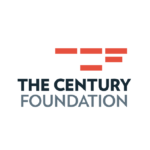From Crisis to Opportunity: A Mayoral Policy Agenda for an Equitable NYC
The COVID-19 pandemic has exposed and exacerbated New York City’s underlying inequities. From Crisis to Opportunity provides the next mayor a roadmap to finally build the city that New York aspires to be.
View the Introduction in: Spanish
New York City is no stranger to crises. Over the past two decades, the city has faced multiple exigent challenges that deeply impacted the lives of its residents: 9/11, the 2008 financial crash, and Hurricane Sandy. In responding to these events, the city has effectively run on a cycle of recover, rebuild, repeat.
Alongside these crises has been a less visible but ever-present reality facing New Yorkers unable to reap the benefits of the city’s cycle of recoveries. It is a reality of immense hardship and disadvantage; of racism, inequality, declining economic mobility; and poverty and the criminalization of it. The COVID-19 pandemic, as with all disasters, has exposed and exacerbated these underlying inequities.
Before the pandemic hit, one in five adults and one in five children—more than 1.5 million people combined—experienced poverty in New York City. Black and Latinx New Yorkers were twice as likely to experience poverty, with nearly 60 percent of Black and Latinx adults experiencing poverty for at least one year between 2016 and 2019. All too often, a common life event—such as having a child, losing a job, or ending a relationship—forced these New Yorkers into poverty, or back into it, which profoundly impacted their ability to afford housing, medical care, and food for themselves and their families.
The COVID-19 pandemic has pushed New Yorkers already struggling to make ends meet for themselves and their families to the brink. Nearly half of city residents lost employment income during the pandemic—and those who did were more than twice as likely to have experienced poverty prior to the outbreak, compared to those who were able to transition to remote work. One in four city renters could not pay their rent at some point during the pandemic and roughly 40 percent of New Yorkers faced food hardship. Immigrants, and undocumented immigrants in particular, were hit especially hard, and were excluded from federal relief programs despite disproportionately working in frontline jobs, where the risk of loss of employment or contracting the virus was highest.
FIGURE 1
The fallout from the pandemic has not been limited to a temporary increase in hardship either. Lingering high unemployment, a greater reliance on savings and credit cards, the need to pay accumulated back rent, not to mention future rent, and widened education disparities due to disruptions to learning—these and other factors present major challenges for New Yorkers’ ability to meet their own and their children’s basic needs, now and into the future.
FIGURE 2
New York City’s ability to recover from crises has masked the chronic and systemic difficulties underpinning the lived reality of too many New Yorkers. Now, however, there is a growing recognition that, as the city exits from the pandemic, it cannot go back to “normal” because normal simply didn’t work for millions of New Yorkers. Simply put, the recovery from the COVID-19 pandemic must be markedly different from past city recoveries.
FROM CRISIS TO OPPORTUNITY
View other works in this collection below.
- Introducing “From Crisis to Opportunity: A Policy Agenda for an Equitable NYC”
- Policy Recommendations for an Equitable NYC
- Building a High-Quality Child Care and Early Learning Infrastructure for New York City
- Creating High-Quality, Inclusive, and Equitable Educational Experiences for All of New York City’s Students
- Promoting a Rapid, Equitable Economic Recovery from COVID-19 for New York City
- Strengthening Housing Stability and Opportunity for Low-Income Families in New York City
- Reimagining a More Equitable Policing and Public Safety System in New York City
- Strengthening New York City’s Nonprofit Human Services Sector
From Crisis to Opportunity: A Policy Agenda for an Equitable NYC
Over the course of the past year, during one of the darkest periods in New York City history, as suffering abounded, we saw New Yorkers rise to the occasion. Frontline workers sacrificed their safety to keep the city running, communities banded together in displays of support, small businesses transformed their operations into relief efforts, and foundations and nonprofits established life-saving programs for those in need. While there were certainly missteps by government actors at every level, we also saw the incredible power of public policy: preliminary estimates show that government transfers, including those provided through the federal CARES Act, kept roughly one million adults in New York City from experiencing poverty in 2020, reducing the overall poverty rate by 43 percent.
When a new mayoral administration takes office in January 2022, alongside a City Council with dozens of newly elected members, they will face the herculean task of getting New York City back on its feet. Unprecedented challenges and a wide range of immediate concerns, in nearly every area of public life, will await city leaders on day one. An equitable recovery will require deft policymaking, creativity, innovation, genuine engagement with New Yorkers, and collaboration with the private, nonprofit, and philanthropic sectors.
FIGURE 3
To help guide and hasten that recovery, our three institutions—Robin Hood, The Century Foundation, and Next100—have developed a bold and ambitious policy agenda for the incoming mayoral administration to create a more fair, equitable, and just New York City. The agenda was developed through a comprehensive, inclusive policy process that combined the knowledge and experiences of New York City’s largest anti-poverty organization and its community partners with the expertise of two leading think tanks with a proven record of effecting policy change at all levels of government.
In developing From Crisis to Opportunity: A Policy Agenda for an Equitable NYC, our teams relied on focus groups and conversations with residents, advocates, nonprofits, and other stakeholders. After conducting a large initial survey of New Yorkers and analyzing data on various hardships New Yorkers experienced during the pandemic, we identified six key issue areas that present both considerable challenges for residents, as well as opportunities for policy impact: child care, education, economy and jobs, housing, policing, and human services.
Across the six issue areas, we convened a series of roundtables to gain insights from New Yorkers with lived experience, grassroots community organizations, and local and national policy experts. Our policy recommendations are informed by what we heard from those conversations, as well as by evidence, best practices, and lessons learned from across the country. The agenda was also shaped by data from Robin Hood’s pioneering Poverty Tracker, a longitudinal survey of 4,000 New York City households that provides a dynamic view of poverty, hardship, and disadvantage in the city. We structured the report such that each issue area provides goals for a new mayor; followed by background on the problem and current needs; and concludes with a series of recommended policy responses, which include projections for the impacts associated with different policies as well as new polling showing overwhelming, enthusiastic support for the proposals across the board.
FIGURE 4
Our policy recommendations focus foremost on the areas where the need is the greatest, and are aimed at helping individuals and communities most likely to have limited access to resources and to be experiencing poverty. Where relevant, we pay particular attention to households with children, as underinvestment in our youth compounds the impact of poverty and stifles upward mobility. We propose interventions that expand opportunity across various stages of life, from early childhood to adulthood, in order to break the intergenerational cycle of poverty that burdens too many New York families.
The policy agenda recognizes that New York’s diversity is one of the city’s greatest strengths, and that oft overlooked groups such as undocumented New Yorkers are central to our recovery efforts. Perhaps most importantly, our agenda acknowledges the intersections and interconnectedness of the forces that contribute to poverty and hardship—how unaffordable housing produces segregated schools and educational disparities, for instance, or how a lack of available child care constrains the employment prospects of working families, and women of color in particular. Our recommendations are mutually reinforcing but push in the opposite direction: they build off one another, working in tandem to move the most New Yorkers out of poverty in the most efficient, equitable, and sustainable way.
A Policy Agenda Designed for Impact
Throughout the agenda, we propose policies targeted to support the mobility of New Yorkers of all ages that range from immediate, urgent responses to acute challenges stemming from the COVID-19 pandemic, as well as longer-term, structural solutions that address existing inequities and will lead to higher-quality child care and education services, higher-quality jobs, and higher quality services for all New Yorkers. For example:
In the child care sector, we recommend that a new mayor restore the child care slots lost during the pandemic, while also rebuilding a better, more equitable child care system. Our proposal would ensure that every eligible low-income family who wants child care assistance can receive it, and that no family with income up to $150,000 should have to spend more than 7 percent of their income on child care. According to researchers at Columbia University’s Center on Poverty and Social Policy, our child care recommendations would decrease the poverty rate for children under age three in New York City by five to eight percent.
To build a stronger and fairer economy, we urge the incoming mayor to implement a new wage subsidy program that would ensure the speedy rehiring of 30,000 New Yorkers—including at least 24,000 New Yorkers of color—and help thousands of badly hit small businesses reopen. Researchers at Columbia University estimate that this program by itself would slash the poverty rate among participants and their families by more than one-half, from 37 percent to between 11.8 percent and 15.7 percent. Additionally, we encourage the next mayor to make significant investments to strengthen the city’s workforce development pathways, which would in turn support 150,000 workers as they shift into new and better-paying jobs post pandemic.
In many cases, we make recommendations for the best use of federal funding streams, to ensure that the city is using these critical relief funds wisely, in both current relief efforts and longer-term, equity-driven investments. We build upon previous relief initiatives in the city, and address those areas in which recovery efforts have fallen short. For instance, we offer various recommendations for the city to better include and support undocumented New Yorkers who have been shut out from previous federal stimulus payments—a shameful, arbitrary exclusion that 76 percent of New Yorkers agree is concerning.
Taken together, the policy proposals in this agenda are at once visionary and attainable. They respond to the challenges of the moment, while also taking advantage of the opportunities presented by an influx of new federal funds into New York. In fact, many of the recommendations require little to no new revenue generation; yet they would go a long way toward reimagining our workforce development, child care, education, affordable housing, policing, and human services systems.
Toward a New York for Everyone
This is a defining moment for New York City—a point in time in which the need, the desire, and the opportunity for advancing meaningful change have all converged. Nearly three in four New Yorkers say that they are hopeful about a new mayor’s ability to improve quality of life in the city. The incoming administration must seize this moment and dramatically remake New York City into a more fair, just, and equitable place to live—a city in which every New Yorker, regardless of their background, can thrive.
The spirit of ingenuity and cooperation, the sense of urgency and problem-solving that defined so much of the past year, must serve as inspiration for a new administration. The next mayor should use all the tools at their disposal—an all hands-on-deck approach, including executive action, close collaboration with the City Council, and partnerships with the private, nonprofit, and philanthropic sectors—to break the cycle of poverty and hardship that continues to entrap millions of New York families.
This agenda is a plan to do just that. It is a true New Yorker’s agenda, addressing the issues most pressing to residents, informed by their lived experiences, and supported by people from every corner of the city and walk of life. It is a holistic, data-driven, and evidence-based plan that will advance racial and economic justice while helping New York families move and stay out of poverty. In short, it is a roadmap to finally build the city that New York aspires to be.
It’s time to get to work.



